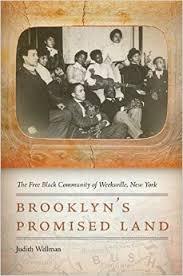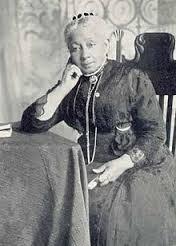frame/work
 I’m setting up a reading schedule so I can finally get through this book, Brooklyn’s Promised Land. Nonfiction can be challenging and historians aren’t known for being outstanding storytellers, but the latest book on Weeksville is comprehensive and necessary reading for my residency. I figure I should try to read nonfiction for at least one hour every day, and I’ll read on the train up to Harlem if I find it too hard to focus here at home. Today I’ve been thinking about the picture book I’ve been commissioned to write. I think I’m going to write three—one for each of the historic houses at the Weeksville Heritage Center. Each house represents a different era—1860s, 1900s, 1930s—and I can incorporate historical figures who might have lived in the community during those times. I know I want to write a ghost story and send a contemporary kid back in time…not sure about Book #3. I’m sure looking at the archival material will give me all kinds of ideas. I could write a childhood biography of Susan McKinney Seward, daughter of a Weeksville landowner who became one of the first African American women
I’m setting up a reading schedule so I can finally get through this book, Brooklyn’s Promised Land. Nonfiction can be challenging and historians aren’t known for being outstanding storytellers, but the latest book on Weeksville is comprehensive and necessary reading for my residency. I figure I should try to read nonfiction for at least one hour every day, and I’ll read on the train up to Harlem if I find it too hard to focus here at home. Today I’ve been thinking about the picture book I’ve been commissioned to write. I think I’m going to write three—one for each of the historic houses at the Weeksville Heritage Center. Each house represents a different era—1860s, 1900s, 1930s—and I can incorporate historical figures who might have lived in the community during those times. I know I want to write a ghost story and send a contemporary kid back in time…not sure about Book #3. I’m sure looking at the archival material will give me all kinds of ideas. I could write a childhood biography of Susan McKinney Seward, daughter of a Weeksville landowner who became one of the first African American women  doctors in the US. For me, the hardest part of writing historical fiction is selecting only a handful of details out of hundreds. I only need one or two “true things” to serve as the foundation for a good story, but I have to comb through everything in order to find the facts that resonate most with me. Aside from The Magic Mirror, I haven’t really written historical fiction for young children (age 5-8). My Texan illustrator is back at work on Billie’s Blues, which touches on the Great Migration and lynching, but mostly I write historical fiction for teens. That way I can write honestly, without feeling pressure to sugarcoat the bitter truth. Judah’s Tale is a lot darker than A Wish After Midnight, which may surprise and/or disappoint readers. But I will be SO glad when I finally finish that book in May and never again have to hear, “When will the sequel be done?”
doctors in the US. For me, the hardest part of writing historical fiction is selecting only a handful of details out of hundreds. I only need one or two “true things” to serve as the foundation for a good story, but I have to comb through everything in order to find the facts that resonate most with me. Aside from The Magic Mirror, I haven’t really written historical fiction for young children (age 5-8). My Texan illustrator is back at work on Billie’s Blues, which touches on the Great Migration and lynching, but mostly I write historical fiction for teens. That way I can write honestly, without feeling pressure to sugarcoat the bitter truth. Judah’s Tale is a lot darker than A Wish After Midnight, which may surprise and/or disappoint readers. But I will be SO glad when I finally finish that book in May and never again have to hear, “When will the sequel be done?”



